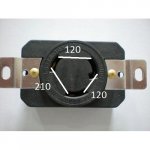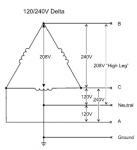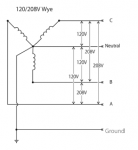I am advancing for a show and are power options are 20 amp edison's and an L6-30 wired for 220v(see crappy paint diagram). Is this right? Seems strange as there is no ground. Can I use these and what will I need to do to connect? Current plug is a 14-50 range plug. I know I would be limited to 30 Amps even though the distro is 50 amps. Can I make(or buy) an adapter of sorts? Thanks. The numbers are what I metered between pins. Edited to say L6-30.
Attachments
Last edited:




